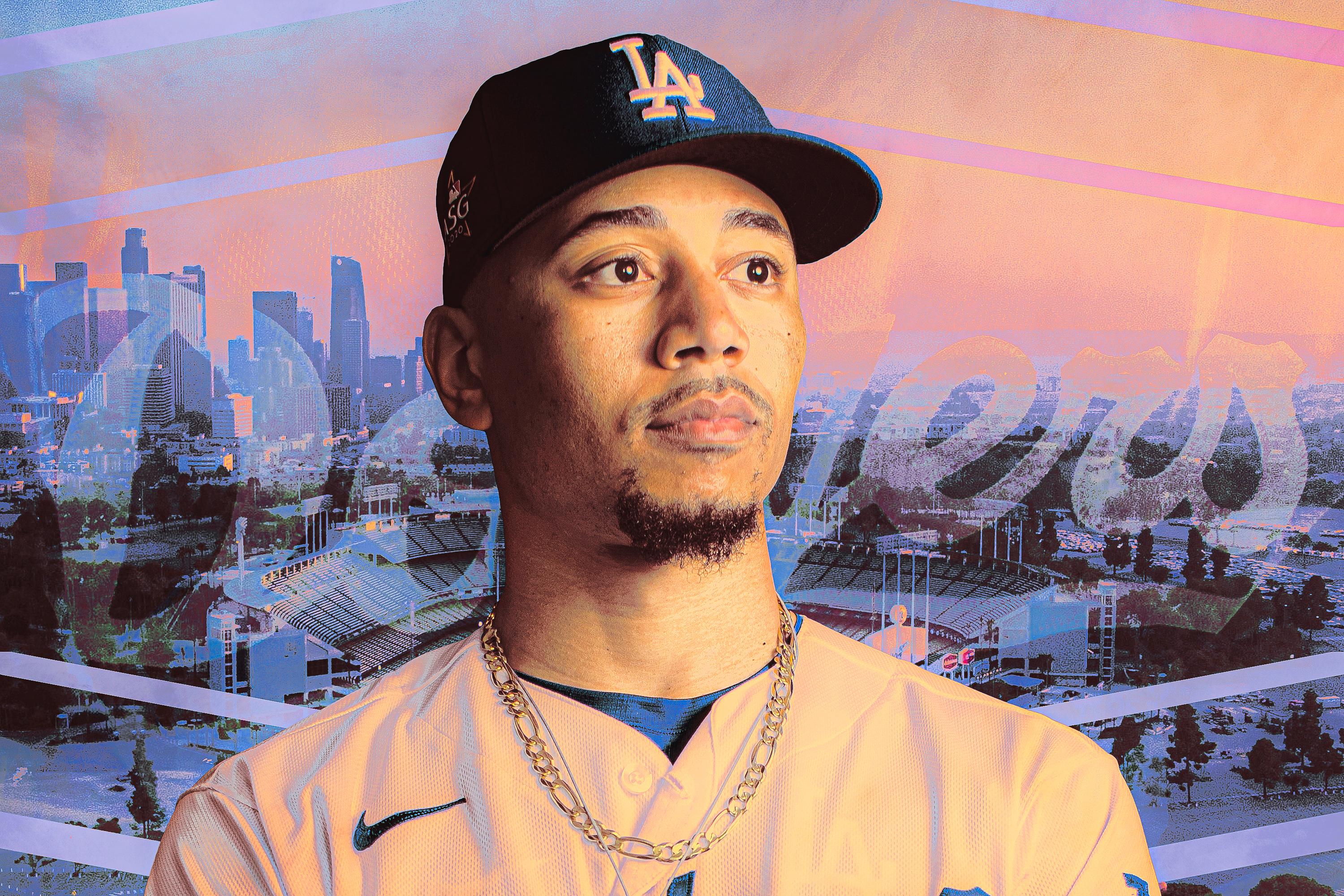
Mookie Betts hasn’t yet played a regular-season game in a Dodgers uniform. His new fans should have plenty of time to get used to his presence in the Los Angeles outfield.
Five months after a gobsmacking trade that sent Betts from Boston to L.A., and just one day before he was set to make his pandemic-delayed Dodgers debut, the impending free agent has agreed to an extension that will tie him to his new team for 13 total years and, presumably, 13 division titles. According to ESPN’s Jeff Passan, the deal would include the 2020 season and a dozen more, paying him a total of $392 million, which would give him the second-largest contract in terms of total dollars in MLB history.
And the Red Sox traded Betts because they reportedly wouldn’t approach his request for a 12-year extension a year ago. Oops.
But Wednesday’s news is not about the Red Sox, who already deserved all the scorn a baseball fan can muster for their whopper of a trade, which came just more than a year after Betts won the MVP for a 108-win World Series champion. Wednesday’s news is about Betts and the Dodgers, who are now in a long-term relationship with the second-best baseball player in the world (if only the second-best baseball player in his own state).
Since Betts’s first full season in 2015, he ranks second among all position players in WAR, behind only Mike Trout, and the gap between Betts and the next player is massive. At Baseball-Reference, third-place Francisco Lindor is closer to 14th place than he is to Betts in second; at FanGraphs, third-place Kris Bryant is closer to 23rd place than Betts.
In most seasons, Betts isn’t in the conversation for best pure hitters in baseball, but he makes up the gap on everyone else with his all-around talent. By Baseball-Reference’s calculations, he is first in that span in defensive value and second to Trout in offensive value; also in that time, per FanGraphs, Betts ranks second to Billy Hamilton in total baserunning contributions.
Few MLB players actually qualify for the classic “five-tool” designation, but Betts brooks no argument in any such area. Want to hit for average? Here’s a .301 career batting average, a top-10 mark for qualified active players. Power? Betts has cracked an average of 29 homers per season over the past four years, and led the majors in slugging percentage in 2018. Baserunning? He’s a career 83 percent base stealer with a league-best résumé for taking extra bases (e.g., going from second to home on a single, or first to home on a double). As for the two defensive tools, look again at that defensive WAR ranking over the past half-decade—Betts is sufficiently skilled to play center field but spends his time in the corner, where he’s won four Gold Gloves in a row.
The Dodgers were already a juggernaut—absent a World Series in decades, but with seven consecutive division titles, the majors’ best roster in 2020, and an endless conveyor belt of prospects making the trip from minor league anonymity to major league stardom. But in Andrew Friedman’s tenure as the head of baseball operations, they hadn’t typically operated at the top end of the financial market. A.J. Pollock’s four-year, $55 million deal is the largest for any free agent who’s signed with the club in recent years, while only lifelong Dodger Clayton Kershaw approached nine figures with a $93 million extension. Much like the Yankees bided their time before striking for Gerrit Cole this winter, though, the Dodgers waited before pouncing on the biggest possible prize. (Not that they needed to wait or cut costs before then, mind you—Forbes estimates that the franchise is worth $3.4 billion and earned $556 million in revenue last year alone.) They didn’t merely sign Betts to the sport’s largest contract aside from Trout’s. They traded for him first, taking on the remainder of David Price’s hefty deal in the process, and plunged into a long-term commitment without looking back.
Until the Betts extension, the Dodgers didn’t have any guaranteed financial commitments beyond 2022, with every veteran on the roster set for free agency before then. (Pollock has a player option, and Max Muncy a club option, for the 2023 season.) At some point in the next 13 years, of course, they will need to decide whether to extend pre-free-agency stars like Walker Buehler and Cody Bellinger. But the Dodgers should have no trouble finding the necessary dollars to entice their young players—and even if the costs rise, there are far worse ways for a baseball team to spend money than pairing Betts and Bellinger in perpetuity.
With homegrown talent like Bellinger already in tow, the Dodgers didn’t need Betts to be favored for another division title in 2020; they probably wouldn’t have needed him in 2021 either, or 2022, or beyond, given their financial might and prodigious player development system. But when you have the chance to add the player who ranks 22nd all time among position players in WAR through his age-26 season—one spot ahead of Barry Bonds and two spots ahead of Willie Mays—and then keep him for possibly the rest of his Hall of Fame career, you seize it.
Or at least you should. Nobody tell the Red Sox what cap Betts will wear on his Cooperstown bust.
This piece was updated Wednesday afternoon with additional details about Betts’s extension.


